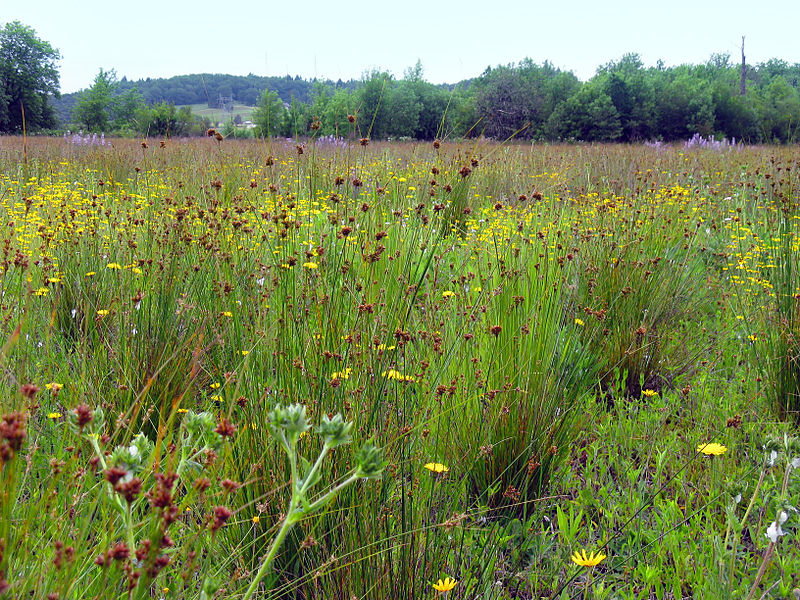The Oil Pollution Act and CERCLA allow for the recovery of more than just cleanup costs following an oil spill or the release of hazardous substances. These laws also provide for the recovery of damages to restore or replace natural resources to the conditions that would have existed prior to the spill or release, as well as to compensate for interim losses of ecological services. Natural resource trustees—states and tribes acting on behalf of the public—are tasked (along with federal trustees) with planning and implementing the restoration of these lost natural resources and services. In Natural Resource Damages, Mitigation Banking, and the Watershed Approach, the Environmental Law Institute (ELI) explains how natural resource trustees can integrate natural resource damage (NRD) restoration with the Clean Water Act (CWA) §404 compensatory mitigation program.
 A Bit of Background
A Bit of Background
The NRD assessment (NRDA) process and CWA §404 compensatory mitigation or habitat compensatory mitigation mechanisms function similarly to offset impacts to protected resources, but there are meaningful differences between the two. The NRDA process seeks to achieve full restoration or replacement of resources and services from unpermitted injuries caused by the release of hazardous substances and oil. Trustees typically pursue detailed determinations of baseline conditions and assessment of restoration alternatives over a period of years. NRDA also often involves conducting new and specific scientific studies to support these determinations—studies chargeable to potentially responsible parties. Timing issues are generally dealt with through accounting mechanisms that incorporate temporal considerations into the measure of restoration (such as discounted service-acre years). In contrast, the CWA §404 and Endangered Species Act compensatory mitigation processes deal with identifying, and in many cases supplying, actions to offset the impacts of permitted activities before the impacts occur. In the case of §404 banks and conservation banks, the credits are generated in advance based on substantial relevant ecological information in hand. Compensatory mitigation credits are typically measured in spatial or linear units or species credit metrics (although these are adjusted with compensation ratios as needed when sold to mitigate particular actions). Despite the differing frameworks, there are places where §404 compensatory mitigation mechanisms and conservation bank mechanisms offer advantages for the resolution of NRDA claims.
Benefits of Integration
Integrating the NRDA process with mitigation banking, conservation banking, and in-lieu fee programs offers many benefits. For example, integration can reduce the time until active restoration occurs and can provide efficiencies in evaluating ecosystem services, identifying restoration options, and implementing needed actions. Coordination can also produce a more regionally oriented outcome by identifying sites that can serve multiple ecosystem goals in a regional context.
The report offers several useful observations and recommendations:
- States and tribes acting as NRDA trustees can encourage the use of existing regional plans and CWA §404 compensatory mitigation mechanisms to meet some of the restoration goals by bringing these forward early in the NRDA process.
- When using CWA §404 or conservation bank credits, credit definition is extremely important to ensure that NRDA requirements are satisfied; opportunities may be greatest where injuries are to well-understood, widely distributed resources.
- Public comment on use of credits for NRDA remains important, and can be integrated with existing processes.
- Tribal trustees may need to examine opportunities to generate restoration credits on their own lands or treaty rights lands via participation in restoration banking.
- Provisions for restoration banks should include all necessary assurances for siting, monitoring, maintenance, long-term management, and financial assurances, which can be based on the mechanisms required in the Corps-EPA Compensatory Mitigation Rule, and the U.S. Fish & Wildlife Service’s Conservation Banking Interim Guidance.
Notably, the report explains that CWA §404 banking, in-lieu fee mitigation, and conservation banking may work well in environments that experience frequent, recurrent spills. Use of these watershed-based mechanisms can work especially well for addressing small spills where full-scale NRDA is not always justified, and where individualized restoration projects cannot be funded effectively based on likely small-dollar recoveries. In areas where there are likely to be multiple NRDA claims, restoration banks could be recognized and pre-designated by trustee agencies as a potential means of meeting liabilities. Most large-scale NRDA cases will continue to require individualized assessments and detailed determination of restoration plans tailored to the array of resources that have been injured.
Mitigation bank and conservation bank developers are less likely to make a speculative investment based on the likelihood of a future demand for restoration credits arising out of a multi-year assessment process by NRDA trustees. Certainty of demand is a feature of CWA compensatory mitigation mechanisms that has sustained a robust market. The same cannot be said for NRDA claims in many settings.
Moving forward, EPA may want to consider integrating NRDA issues in its support for state and tribal wetlands restoration activities and program plans. In its support for “core” elements of wetlands program management plans, along with voluntary restoration and other restoration activities, it could provide guidance to encourage the identification of ways to integrate NRD restoration with a landscape-level approach to aquatic resource conservation.
